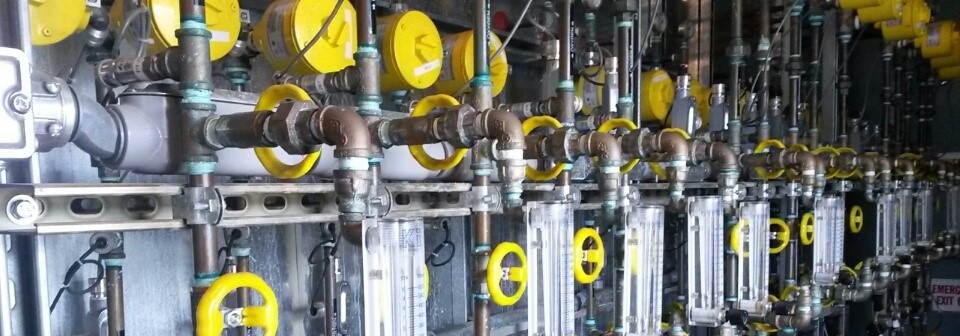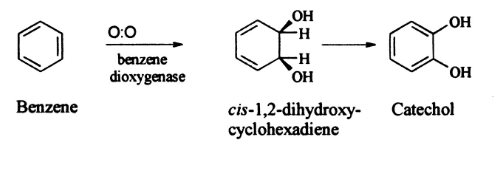 Bioremediation is typically used to accelerate the in-situ degradation of contaminants by microorganisms in the subsurface, with (aerobic) or without (anaerobic) molecular oxygen. Generally subsurface conditions are manipulated to increase the rate of transformation for the target compound through the addition of or change to:
Bioremediation is typically used to accelerate the in-situ degradation of contaminants by microorganisms in the subsurface, with (aerobic) or without (anaerobic) molecular oxygen. Generally subsurface conditions are manipulated to increase the rate of transformation for the target compound through the addition of or change to:
- Fermentable materials
- Oxygen levels
- Nutrient conditions
- Bacterial communities
- pH levels
- Miscellaneous
Some additional information about the biological processes:
Anaerobic bioremediation is used to accelerate the naturally occurring in-situ bioremediation of contaminants by indigenous microorganisms in the subsurface, in the absence of oxygen. In anaerobic conditions, bacteria ultimately metabolize organic contaminants to methane, carbon dioxide, and hydrogen gas. In these anaerobic reactions, bacteria gain energy when an atom (typically a halogen) on a contaminant is replaced with hydrogen. Unlike enhanced aerobic bioremediation, it is common to add specialty bacteria (bioaugmentation) for enhanced anaerobic bioremediation applications.

For many anaerobically degradable contaminants, optimal conditions can be established by distributing an organic substrate throughout the targeted treatment area. Organic substrates typically consist of short-term (e.g. lactate) and long-term electron donors (e.g. vegetable oil, emulsified vegetable oil [EOS]) to provide a robust enhancement to the indigenous anaerobic bacteria for degradation of common chlorinated solvents.
In the cases were the native bacteria cannot degrade the target contaminants or the rate of degradation needs to be increased, biostimulation may be required. These cultures are designed to provide a suitable bacterial population to expedite remediation. Cultures can include several unique strains of dehalococoides and dehalobacter that are customized for challenging environments including brackish waters, low pH, and high contaminant concentrations.
Aerobic bioremediation is typically used to accelerate naturally occurring in-situ bioremediation of contaminants by indigenous microorganisms in the subsurface (biostimulation), in the presence of oxygen. In the presence of aerobic conditions and appropriate nutrients, microorganisms can convert many organic contaminants to carbon dioxide, water, and microbial cell mass. For many aerobically degradable contaminants, simple oxygen is the primary limiting factor (although pH buffer compounds and nutrients may be required) and is normally depleted in zones that have been contaminated with hydrocarbons.

Enhanced aerobic bioremediation technologies include biosparging (typically with air or pure oxygen); bioventing; and use of oxygen releasing compounds or devices. These technologies work by providing a supplemental supply of oxygen to the subsurface and therefore the rates of petroleum hydrocarbon transformation can be increased substantially over non-stimulated rates. These enhanced aerobic bioremediation technologies can be used to address contaminants in the unsaturated zone, the saturated zone, or both. Bioventing, for example, specifically targets petroleum hydrocarbon contaminants in unsaturated zones and does not address contaminants in the capillary fringe or saturated zone.
While not typical for aerobic bioremediation, in some cases, the native bacteria may not be able to degrade the target contaminants. In these cases, bacteria may be added to the site (bioaugmentation). The cultures are designed to provide a suitable bacteria population, or to supplement the existing bacteria population and expedite remediation. XDD’s library of aerobic cultures include etheneotrophs, methanotrophs and cultures capable of oxidizing vinyl chloride.
What compounds are treated?
In general compounds derived from petroleum (benzene, toluene, and other hydrocarbons) are treated aerobically (in the presence of molecular oxygen) while halogenated compounds are treated anaerobically (without molecular oxygen). As the degree of halogenation decreases, some compounds can biodegrade through either aerobic or anaerobic processes.
When to use bioremediation?
Bioremediation is an excellent low cost choice, as it utilizes the naturally occurring microorganisms to reduce compound concentrations in the subsurface and generally requires less equipment and energy to implement. Generally, the presence of non-aqueous phase liquids preclude the use of bioremediation within the source zone due to long time frames and operational cost.
How long will it take?
The time frames for enhanced biodegradation depend upon a number of factors:
- The target criterion
- The maximum half-life of the compound of interest
- The total mass of the compound
- The relative solubility and soil partitioning of the compound
- The availability of naturally occuring or augmented microorganisms in the subsurface
- The site specific temperature, pH, and available nutrients
Treatability testing and biodegradation models can be used to estimate the acheivable half-life and therefore estimate the remedial time frame.
Design Considerations
What is the contaminant?
- Some contaminants not conducive to bioremediation
- Anaerobic or aerobic pathway
What is the contaminant concentration?
- High concentrations may be toxic to bacteria
Bench-scale tests can be used to test viability, develop “recipe”, and determine the number of applications
Possible Amendments:
- Bacteria
- Buffer (pH)
- Oxygen Releasing Compounds (ORC)
- Nutrients
- Electron Donor (e.g. lactate, sulfate, etc.)
More information on XDD Environmental’s enhanced bioremediation experience and services.
